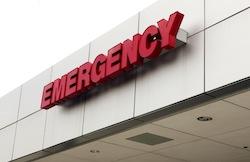
January 9, 2012 – Uninsured patients, and those with Medicaid, receive far fewer imaging services than those with private insurance during emergency department (ED) visits, according to a study in the January issue of the Journal of the American College of Radiology.
The higher use of EDs by persons without health insurance is well documented. Previous studies have found that ED visits are more likely for the uninsured, persons below the 100 percent federal poverty level and those in poorer health.
“On average, Americans without health insurance receive fewer healthcare services than those with insurance. However, the specific types of services for which the uninsured face access and utilization deficits are not well understood,” said Kimberly E. Applegate, M.D., MS, lead author of the study.
The main database used for the study was the 2004 National Hospital Ambulatory Medical Care Survey. The survey contained two fields critical to the study: source of payment, and imaging services rendered and ordered by the referring ED doctor during the ED visit. Compared with comparable insured persons, non-elderly uninsured and Medicaid patients received fewer services in the ED. Similar results were found for the value of imaging services received.
“These results suggest that insurance status influences how much imaging and the intensity of imaging patients receive,” said Applegate. “Whether insured patients receive unnecessary imaging or uninsured and Medicaid patients receive too little imaging is not clear,” she said.
For more information: www.jacr.org.


 November 18, 2024
November 18, 2024 







